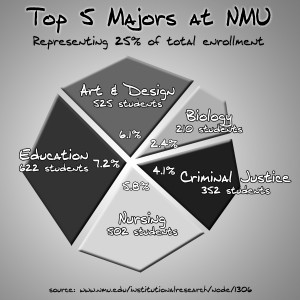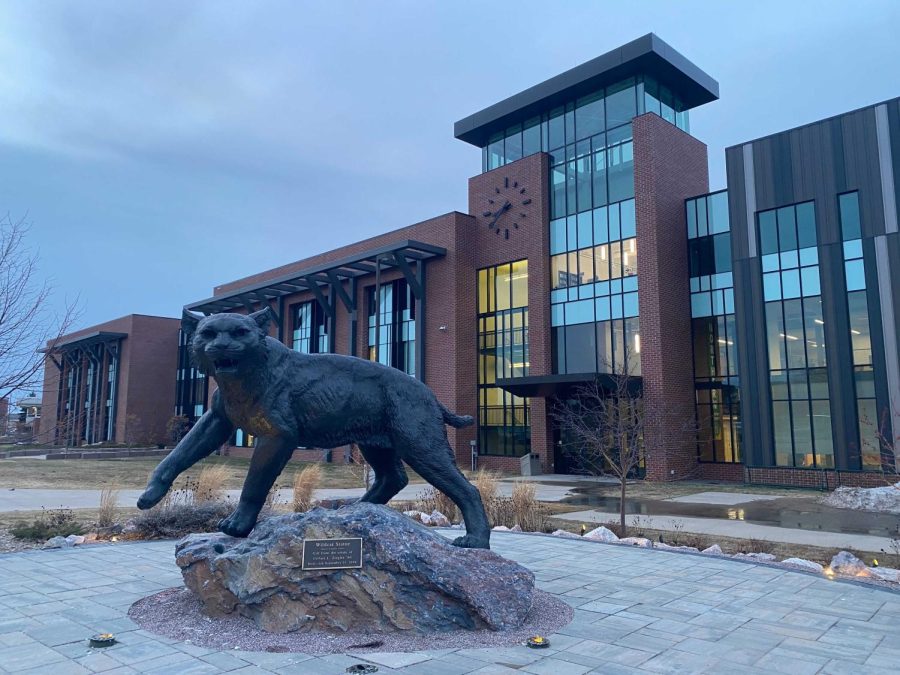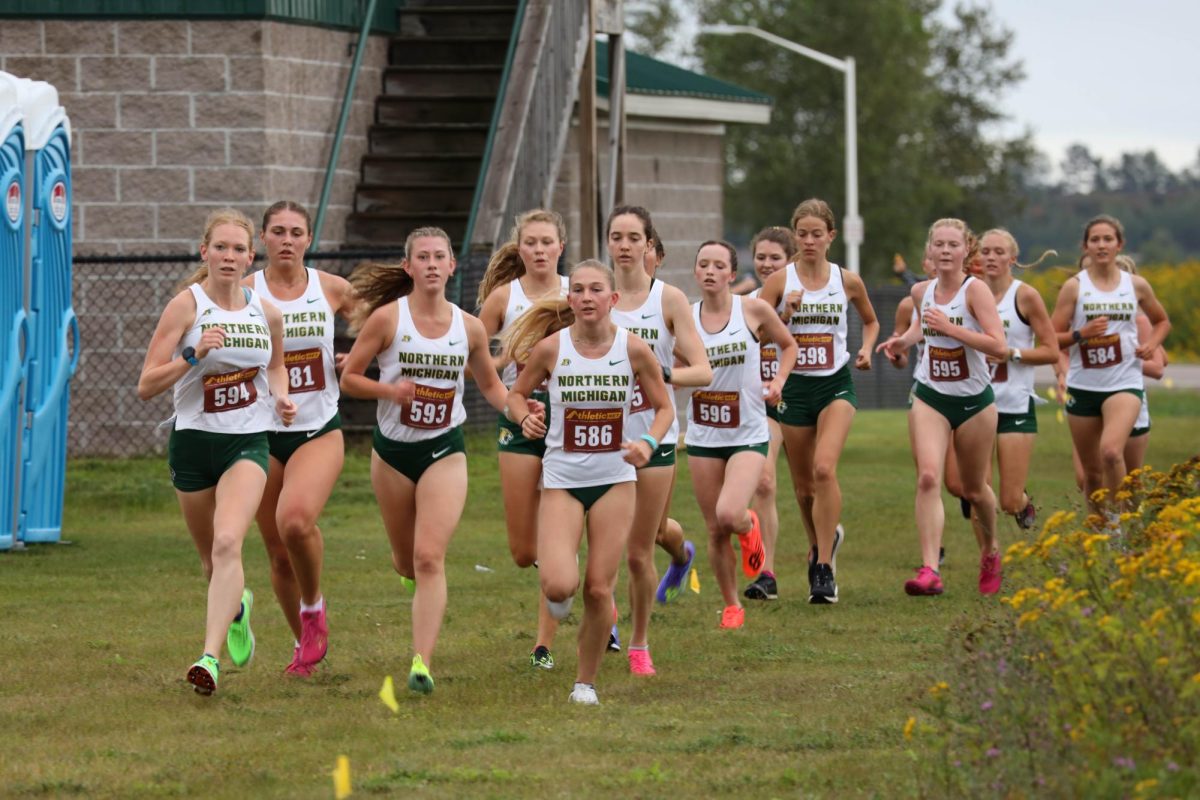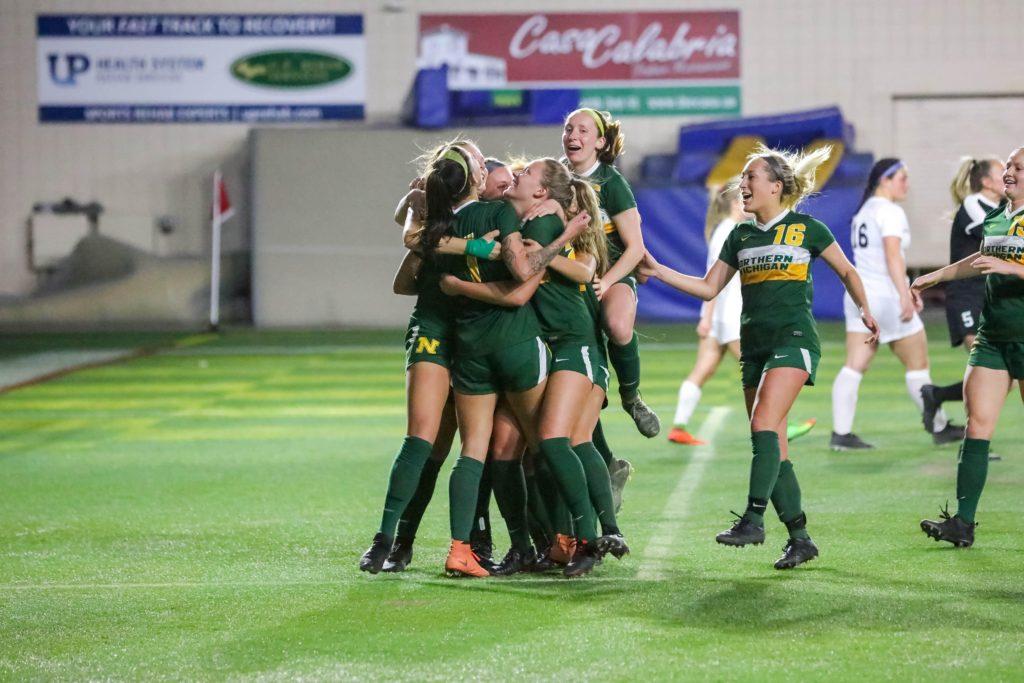 The most popular majors at NMU are those that seem to have a sense of job security, say university officials. The top five majors at NMU by enrollment are art and design, criminal justice, nursing, education and biology — representing a quarter of all enrollment.
The most popular majors at NMU are those that seem to have a sense of job security, say university officials. The top five majors at NMU by enrollment are art and design, criminal justice, nursing, education and biology — representing a quarter of all enrollment.
“Those five areas are strong areas, and I think they are going to continue to be strong,” said Jim Gadzinski, the director of the Academic and Career Advisement Center.
As the university launches into a rebranding campaign, these popular majors may become a large part of recruitment efforts, along with other strong programs. Gadzinski noted psychology, theater, pre-med and construction management as a few examples.
Steve Neiheisel, vice president for enrollment management and student services, said the university has 13 programs being used specifically to target incoming freshmen for 2015. These include new programs, in order to help them begin to grow, and programs where there is demand or capacity in employment.
“We all have our basic majors but the question is what is the university known for and which programs have a larger reach to where they are outstanding and can draw students in from further out of state,” Neiheisel said.
With enrollment having dropped nine percent in the last five years, NMU has retooled its recruitment efforts. With over 180 majors, NMU is focusing on a select few they think will be attractive to new students, according to Neiheisel.
The university approved seven new programs last fall, according to Neiheisel.
These new programs include five graduate programs: higher education in student affairs, post-secondary biology education, clinical molecular genetics, applied behavioral analysis and public administration online.
The two new undergraduate programs are paralegal studies and cyber defense.
Six others are targeted growth initiatives due to their demand in the workforce, Neiheisel said. These include neuroscience, construction management, automotive service technology, aviation maintenance, wildland firefighting certification and electrical power technician.
“It’s really the success of the students coming out of the programs that says they did well and our students do well,” Neiheisel said.
In a report released by Michigan State University economist Philip Gardner, hiring for new college graduates in 2014-15 is expected to increase by 16 percent.
Nick Brink, a junior human centered design major, said he didn’t originally know that NMU’s art and design program was popular when he chose the university.
However, he believes the cost makes his college experience much more manageable.
“NMU teaches a solid curriculum without the financial burden of art specific schools like Kendal College of Art and Design,” Brink said.
With much of the planning for 2015 in place, Neiheisel said the university is now positioning itself for the 2016 recruitment cycle.
“We have to expand our recruiting region because of the demographic decline in the state of Michigan, which has 20 percent fewer high school graduates,” Neiheisel said. “If we’re going to go out of state we have to have programs that are very high quality and that can convince people to come here.”
For example, in the nursing profession, there are job opportunities right now, even in the U.P., which makes that major attractive, Gadzinski said. He also thought the new master’s of higher education in student affairs was a strong addition.
“I think that’s going to increase some enrollment and some people already working in higher education may look at that for a second degree,” Gadzinski said.
Gadzinski also identified social sciences, writing and education as attractive programs.
“I think education has always been our niche here,” Gadzinski said.
Each generation of college students is very different, he stressed. His generation focused on majors that made them “feel good,” while the millennial generation is looking for a major that will earn them a job and a decent paycheck.
Gadzinski credited this change to the drastic difference in the economic climate in which each generation grew up.
“Today,” he said, “people are more realistic about the economics.”






























Trent P. • Oct 24, 2014 at 12:01 pm
There’s not 180 majors…126. It’s 180 academic programs